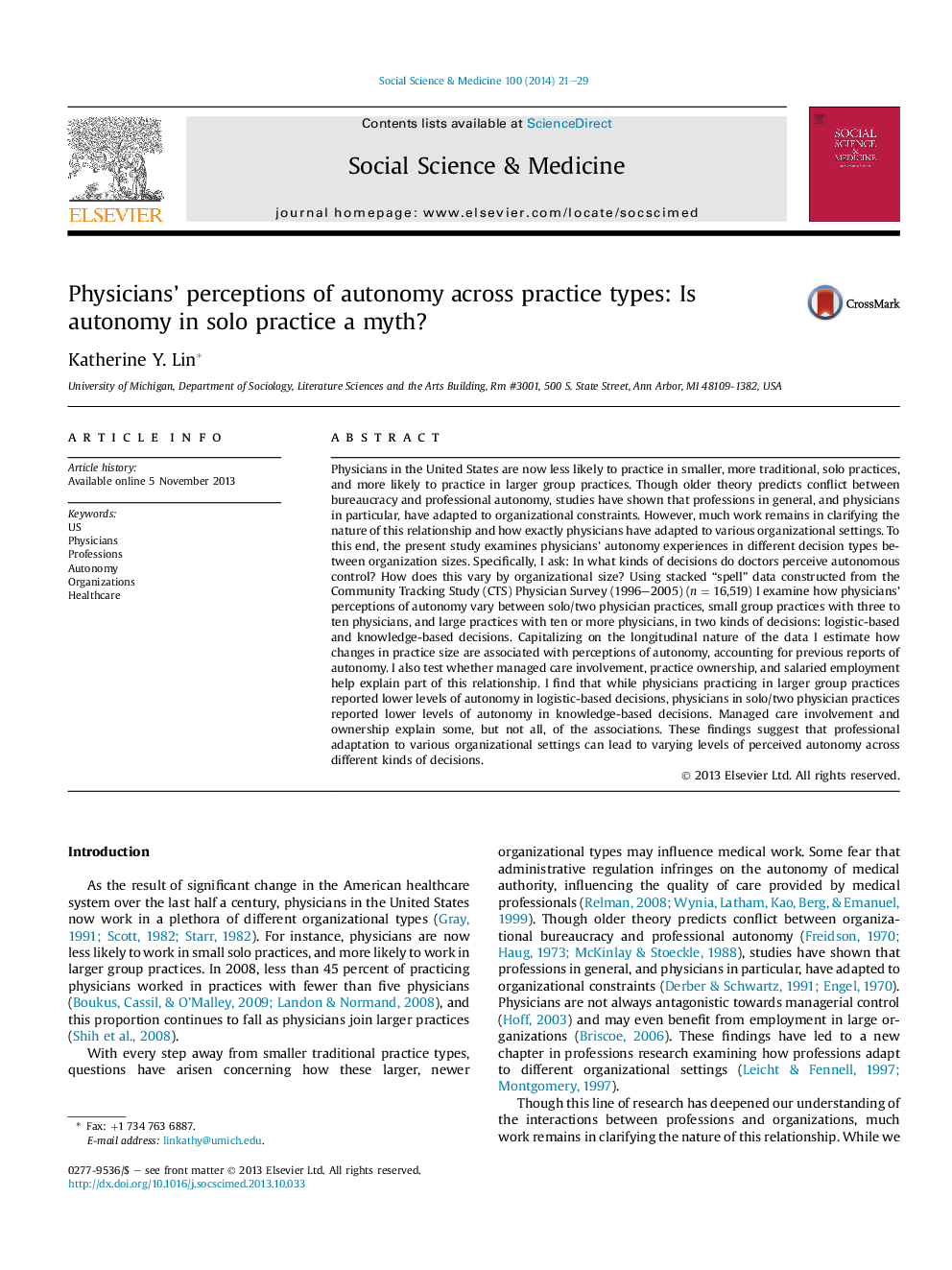| Article ID | Journal | Published Year | Pages | File Type |
|---|---|---|---|---|
| 7336120 | Social Science & Medicine | 2014 | 9 Pages |
Abstract
Physicians in the United States are now less likely to practice in smaller, more traditional, solo practices, and more likely to practice in larger group practices. Though older theory predicts conflict between bureaucracy and professional autonomy, studies have shown that professions in general, and physicians in particular, have adapted to organizational constraints. However, much work remains in clarifying the nature of this relationship and how exactly physicians have adapted to various organizational settings. To this end, the present study examines physicians' autonomy experiences in different decision types between organization sizes. Specifically, I ask: In what kinds of decisions do doctors perceive autonomous control? How does this vary by organizational size? Using stacked “spell” data constructed from the Community Tracking Study (CTS) Physician Survey (1996-2005) (n = 16,519) I examine how physicians' perceptions of autonomy vary between solo/two physician practices, small group practices with three to ten physicians, and large practices with ten or more physicians, in two kinds of decisions: logistic-based and knowledge-based decisions. Capitalizing on the longitudinal nature of the data I estimate how changes in practice size are associated with perceptions of autonomy, accounting for previous reports of autonomy. I also test whether managed care involvement, practice ownership, and salaried employment help explain part of this relationship. I find that while physicians practicing in larger group practices reported lower levels of autonomy in logistic-based decisions, physicians in solo/two physician practices reported lower levels of autonomy in knowledge-based decisions. Managed care involvement and ownership explain some, but not all, of the associations. These findings suggest that professional adaptation to various organizational settings can lead to varying levels of perceived autonomy across different kinds of decisions.
Related Topics
Health Sciences
Medicine and Dentistry
Public Health and Health Policy
Authors
Katherine Y. Lin,
